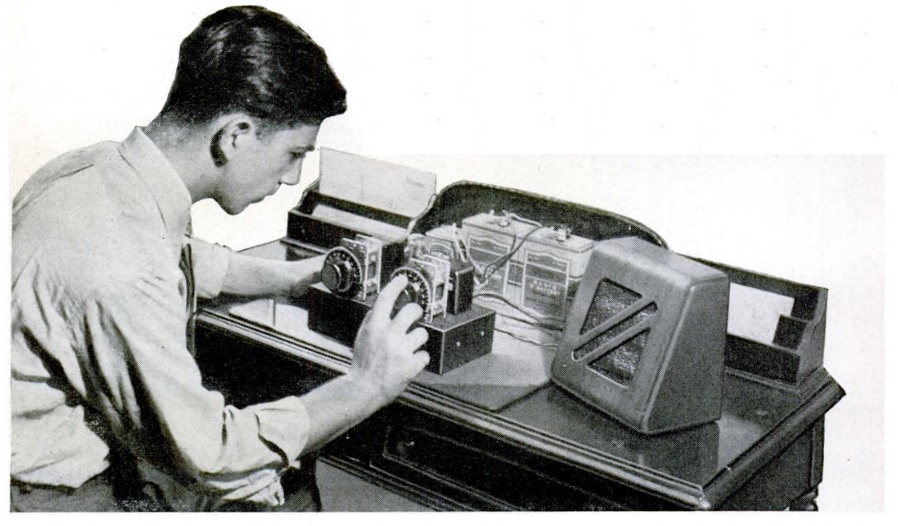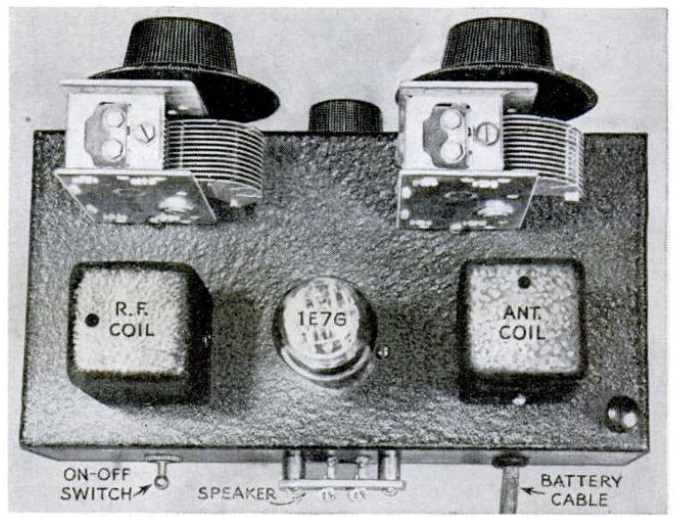 This young man is pulling in a local station with loudspeaker volume using the circuit shown 80 years ago this month in the November 1940 issue of Popular Science. The set uses a 1E7G dual pentode. One half is an RF amplifier, and the other half serves as the detector, but with enough output to drive a speaker with no further amplification. For stations within ten miles, and indoor antenna can be used, and for local stations further away, a good outdoor antenna is necessary. Selectivity was said to be very good, with the circuit able to separate strong stations only 30 kHz apart.
This young man is pulling in a local station with loudspeaker volume using the circuit shown 80 years ago this month in the November 1940 issue of Popular Science. The set uses a 1E7G dual pentode. One half is an RF amplifier, and the other half serves as the detector, but with enough output to drive a speaker with no further amplification. For stations within ten miles, and indoor antenna can be used, and for local stations further away, a good outdoor antenna is necessary. Selectivity was said to be very good, with the circuit able to separate strong stations only 30 kHz apart.
The set is a TRF, meaning that each stage had its own tuning dial. Two ganged variable capacitors could be used, but the separate dials allow each stage to be tweaked for maximum sensitivity. The 90 volt plate voltage was supplied by two 45 volt B batteries, with a 3 volt A battery lighting up the filaments.


